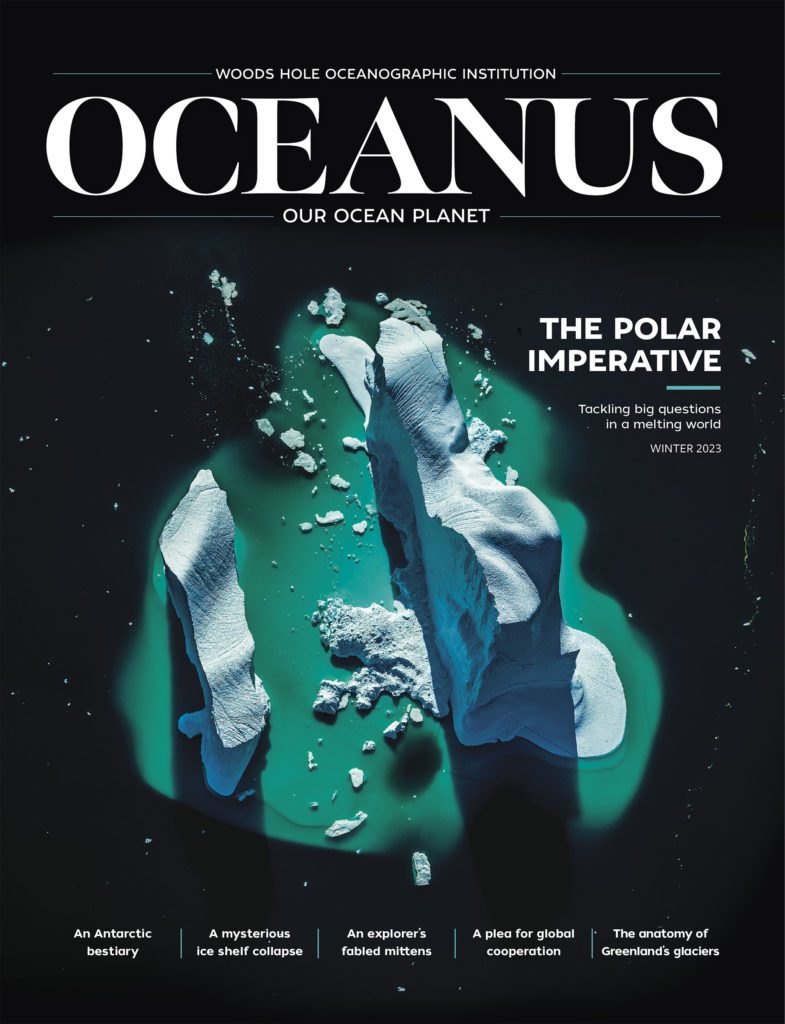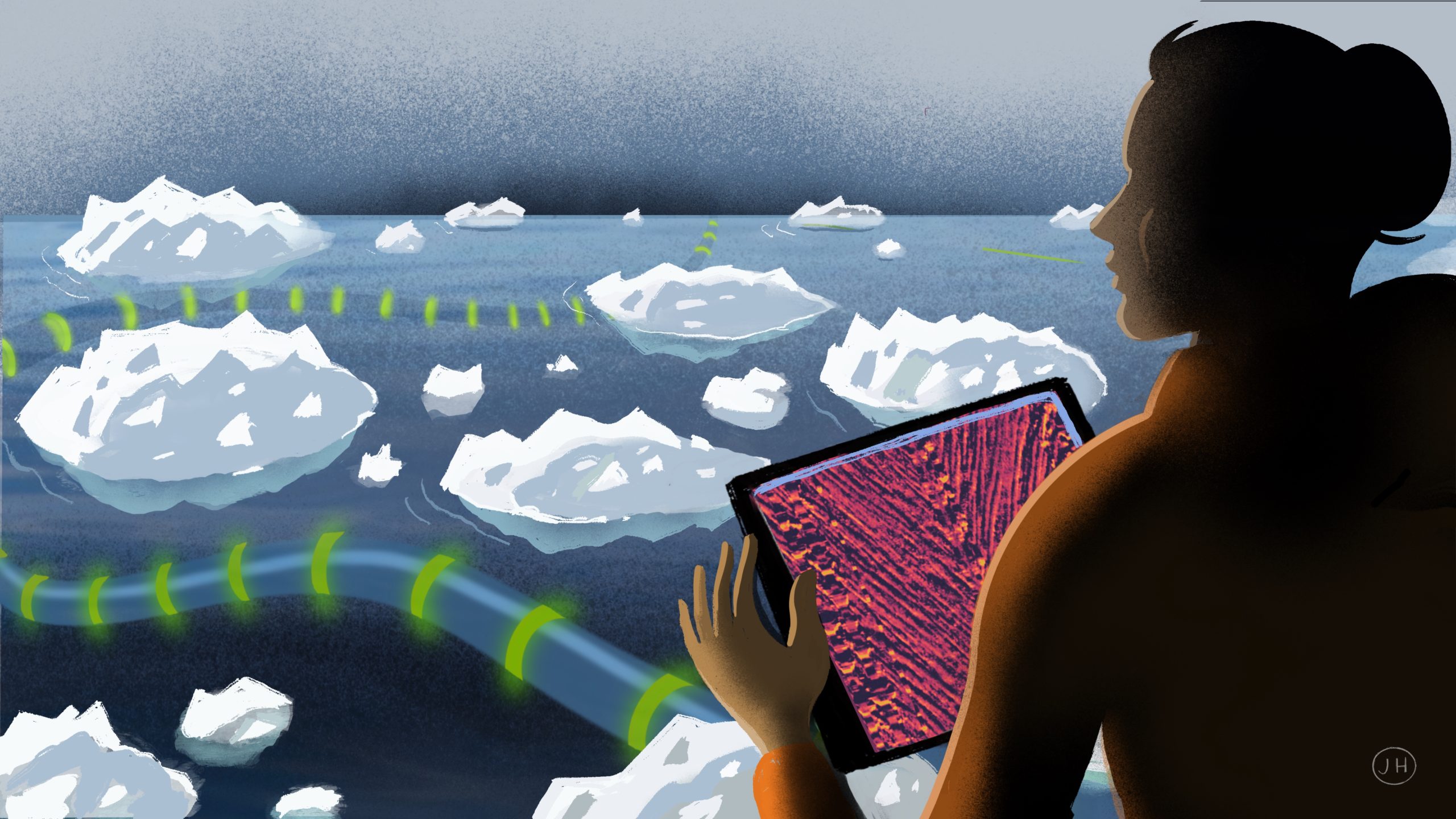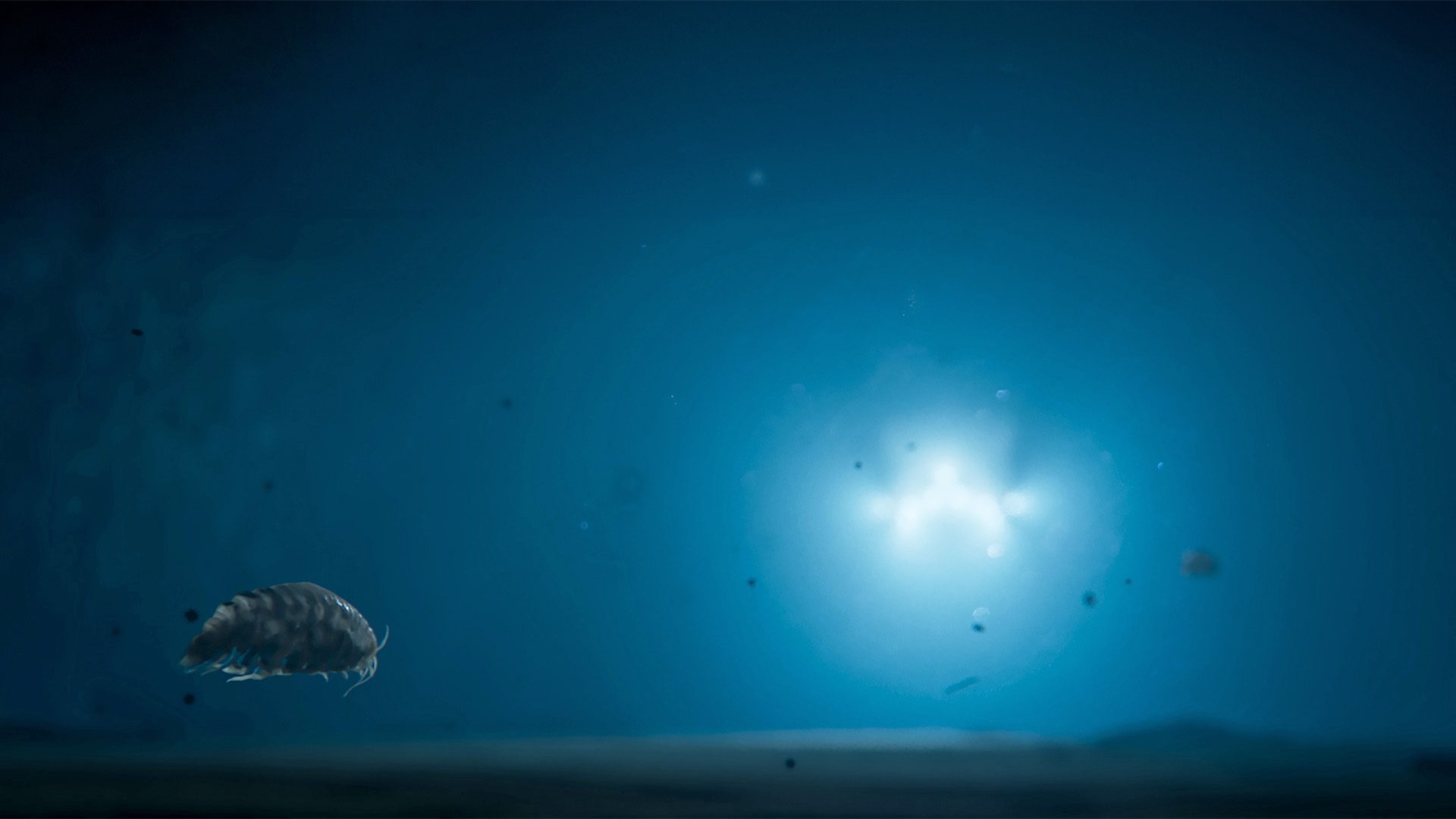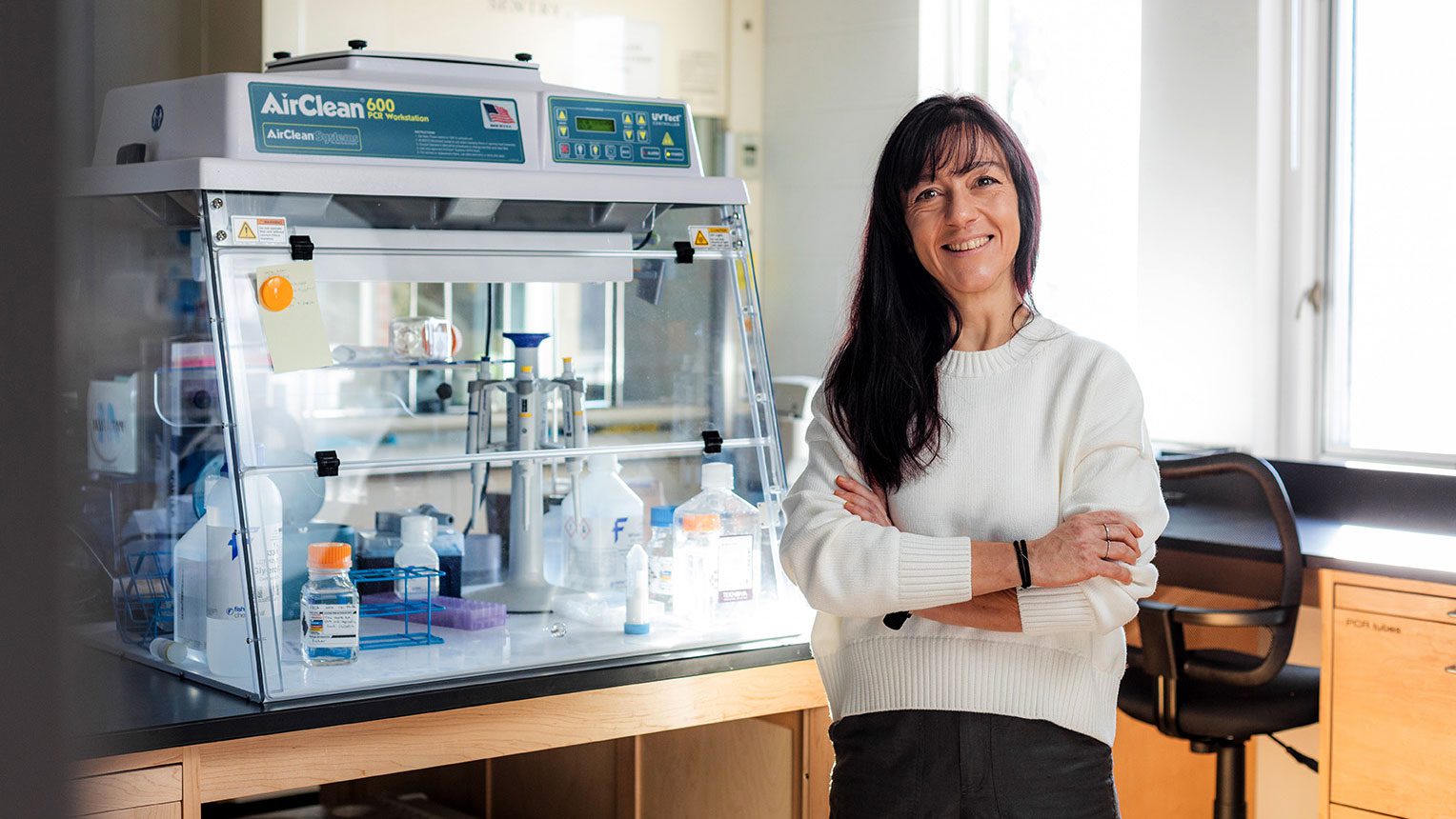Meet the Jason Team: Mario Fernandez
A mechanical engineer, pilot, and expedition leader on vehicle design and adventures at sea
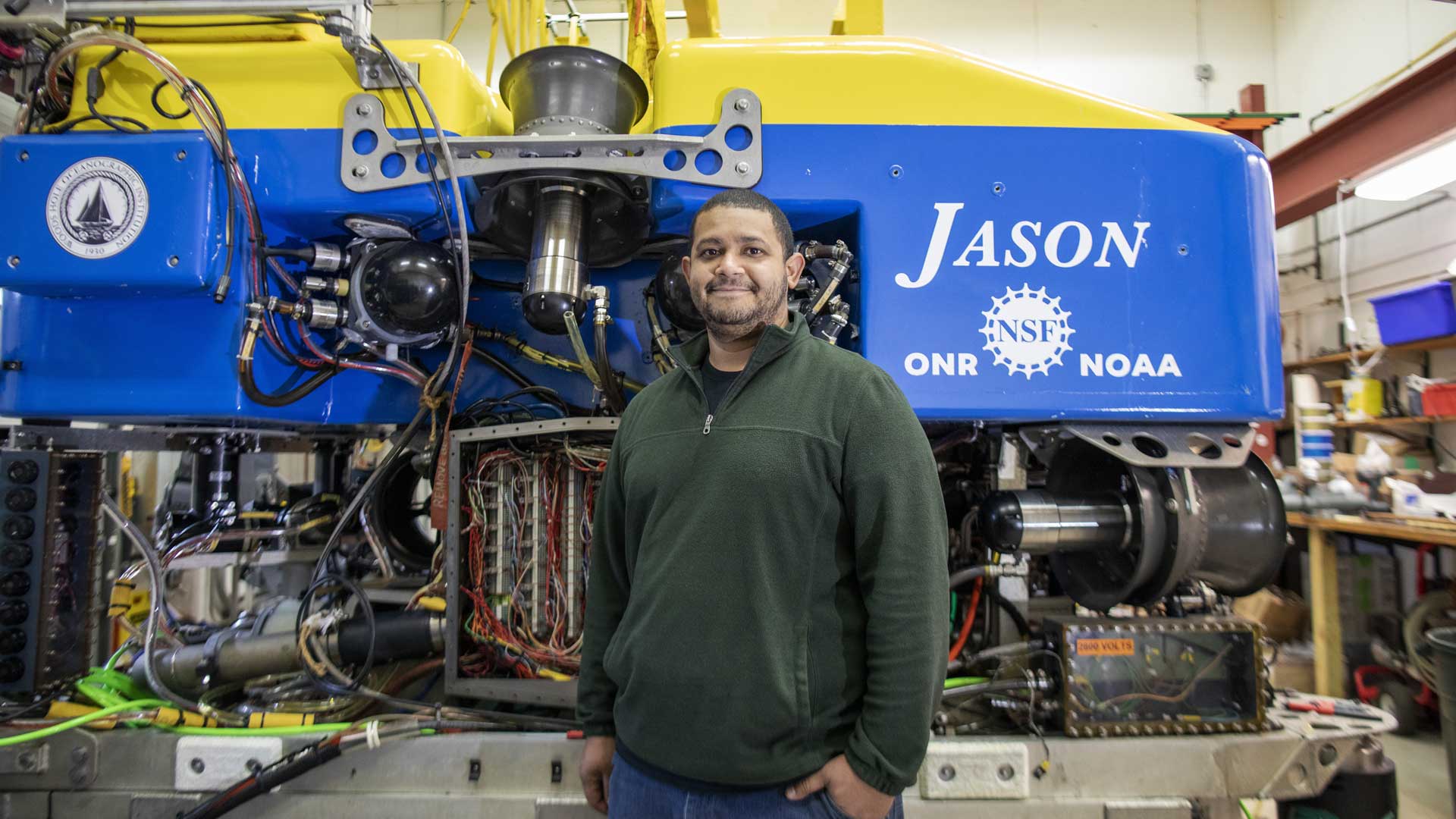
Estimated reading time: 4 minutes
Mario Fernandez is a mechanical engineer in the Jason Group at the National Deep Submergence Facility hosted at WHOI. Fernandez studied Ocean Engineering as an undergraduate and started his career as a summer intern doing hydraulics work on the Remotely Operated Vehicle (ROV) Jason and going to sea with Human Occupied Vehicle (HOV) Alvin. Over the last decade, Fernandez has become an ROV pilot and has participated in a mechanical redesign of Jason. Now, he serves as an expedition leader on cruises. Fernandez took some time to talk with Oceanus about his work and recount some his most memorable sea stories.
Oceanus: What does your day-to-day work look like?
Fernandez: When I'm on shore, I do mechanical design engineering for Jason. This ranges from designing science equipment that interfaces with the vehicle to doing large scale redesigns or upgrades to vehicle sub-systems. When the vehicle is back home in Woods Hole, I'm usually maintaining and repairing it for the next cruise. When I'm at sea, I'm an ROV pilot and mechanic. Over the last two years, I've also been the expedition leader for Ocean Observatory Initiative cruises on the west coast. As expedition leader, I am a liaison between the different groups on the ship-the crew, scientists, and vehicle operation team-making sure everyone is following the same schedule and is coordinated during deck operations.
Oceanus: What does Jason do on Ocean Observatories Initiative cruises?
Fernandez: This cruise is to maintain the west coast Regional Cabled Array, which is a series of cables on the sea floor with hundreds of scientific instruments attached to them. This observatory is unique because it spans an active tectonic plate-the Juan de Fuca. It sends a constant stream of real-time data back to shore. It is managed by the University of Washington.
We visit the site annually and Jason moves up to 4000-pound loads of equipment from the ship to the sea floor and actually goes down and installs the new equipment as well. Jason is one of only two science ROVs that can do these types of heavy lift tasks. Between 2015 and 2016, we did a National Science Foundation funded upgrade of Jason to enable it to do this work.
Oceanus: You were a mechanical engineer on the heavy lift upgrade, and you redesigned the vehicle frame, which is one of the most important aspects of the upgrade. What was that process like?
Fernandez: That project was one of the biggest jobs of my career so far. We had to transform Jason from a vehicle built to explore the seafloor to one that could go up and down with heavy loads, make connections, and do all that as fast as possible. Other members of the team redesigned a new crane and winch to support those larger loads. And the same team had to operate the existing vehicle while developing a new design. It was an exciting year. At the end of it, we finished the work on Jason's first cruise doing heavy lift tasks two days early-so we really knocked it out of the park.
Oceanus: What originally compelled you to pursue a career in ocean engineering?
Fernandez: I've always been interested in designing and building remote controlled electronics, working on cars, and fabricating things by hand. I decided to study Ocean Engineering in college and then managed to make my way to WHOI. What interested me-in addition to designing and building vehicles-is travelling to places I never would have gone otherwise. And, of course, seeing the seafloor. I have incredible sea stories. I've seen sharks, explored black smokers at hydrothermal vents, escaped an angry tuna. Also, flying Jason around is just a ton of fun.
Oceanus: What are some of your most memorable dives?
Fernandez: In early 2020, Jason was exploring a hydrothermal vent system and we experienced an underwater earthquake. On the cameras we could see a billion shrimp jump off the vent, and the vent start swaying, and then five seconds later we felt the ship vibrating violently. The wave had to propagate through the water column to get to us and the video from the cameras were being piped back up to the ship at the speed of light. There was so much excitement in the control van at that moment.
Oceanus: Can you tell us about the angry tuna?
Fernandez: That was my first dive as a Jason pilot. We were studying corals off North Carolina's Outer Banks. This area is shallow and known for its fishing. While we had Jason in the water we could see sport fishing boats all around us. We got down to the bottom and started taking push cores for the scientists, and then we saw something shiny dash across the screen.
The next thing you know, it came back and Jason lurched. Jason is about 10,300 pounds, so it takes a significant amount of force to move it. And then we saw it clear as day: we were being attacked by a giant tuna. It was huge-probably about 400 pounds-and when it went vertical it was the full height of Jason.
We had to protect the science team's push cores and the vehicle, so we moved away. Jason is designed to be open framed, without protective skins. This makes servicing and maintaining the vehicle easier but it leaves the internals parts of a bit more vulnerable.
As we were running away, we thought that the tuna was attracted to the light. So, we stopped, locked Jason in place, and turned off all the lights. When we turned the lights on a minute later, it looked like the tuna was gone. But then a junior scientist noticed that one camera was pointing inside the vehicle at a weird angle, and sure enough the fish had wedged itself inside. We had to do a shimmy to shake it out.
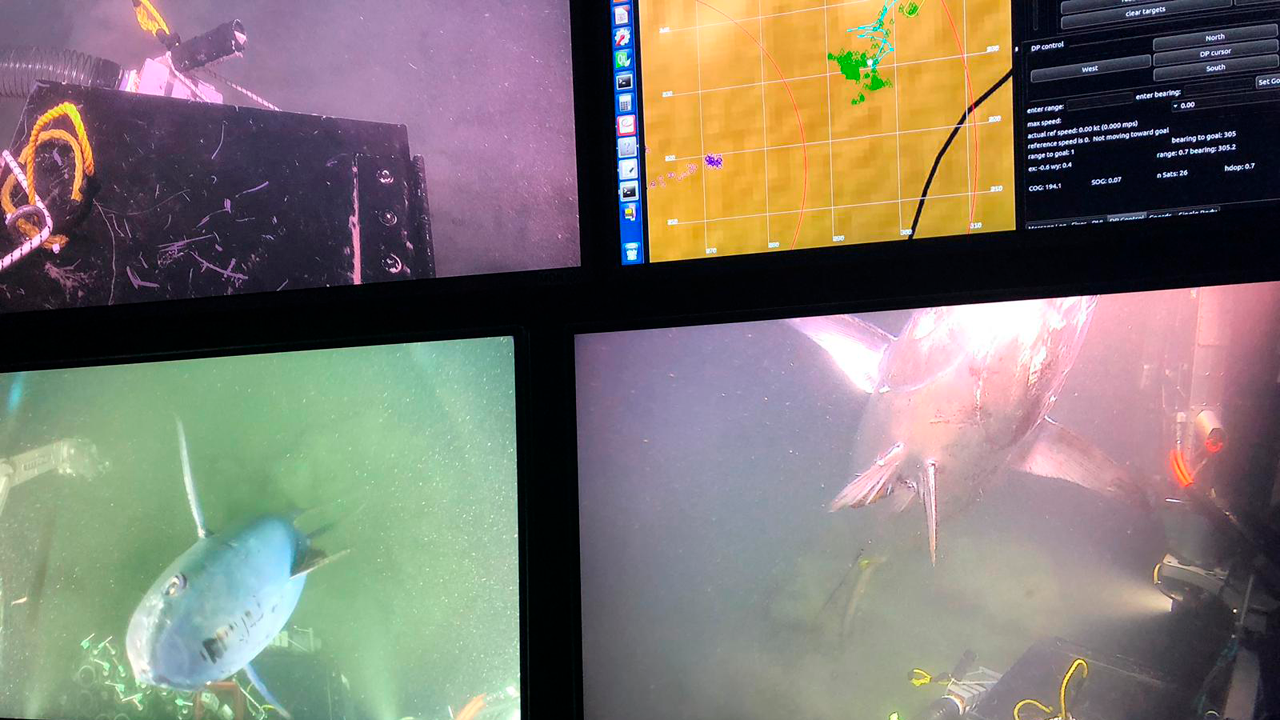
View of the giant tuna taken from the ROV Jason van. (Mario Fernandez © WHOI)
